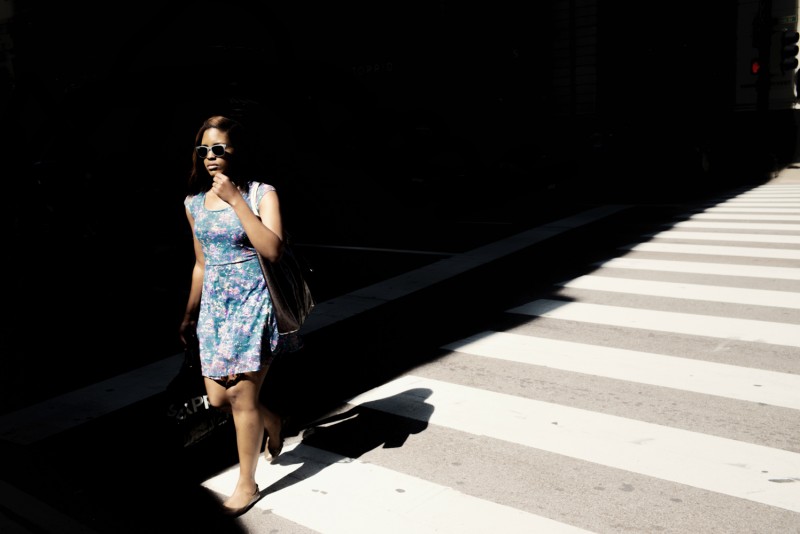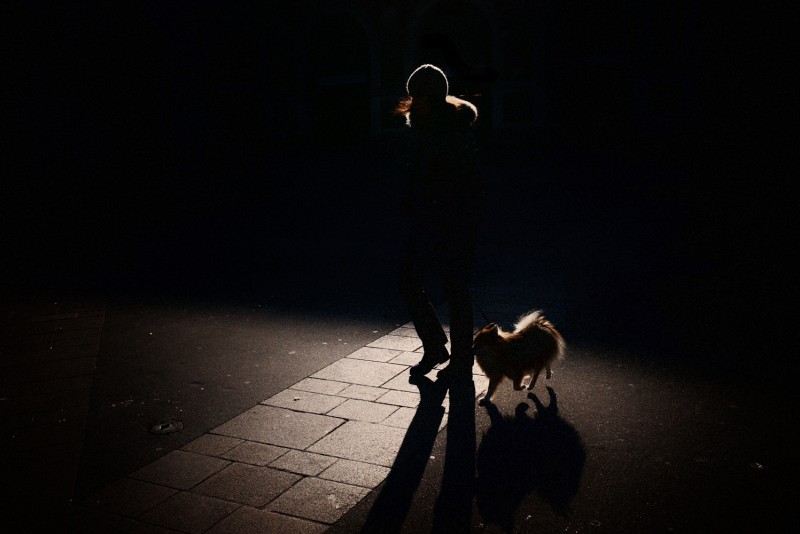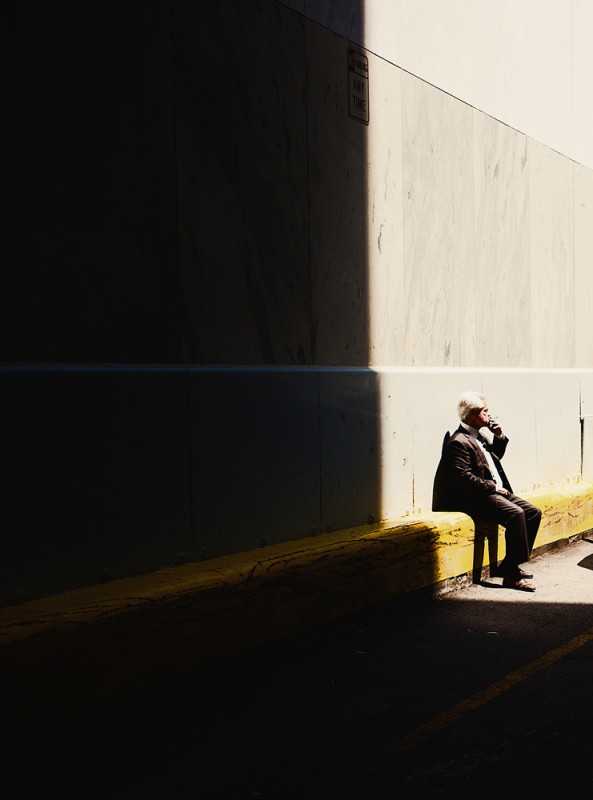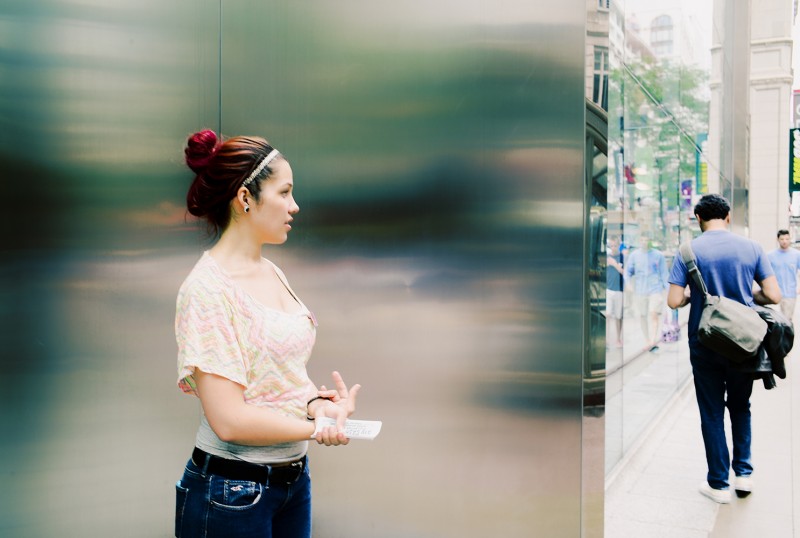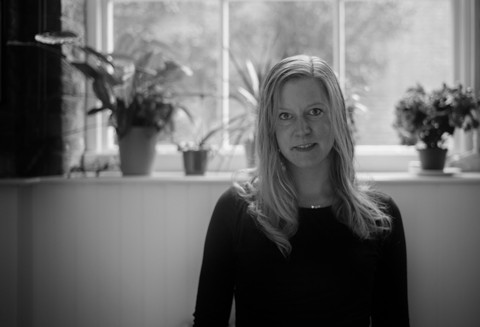City stories
City stories
Marie Laigneau
February 28, 2016
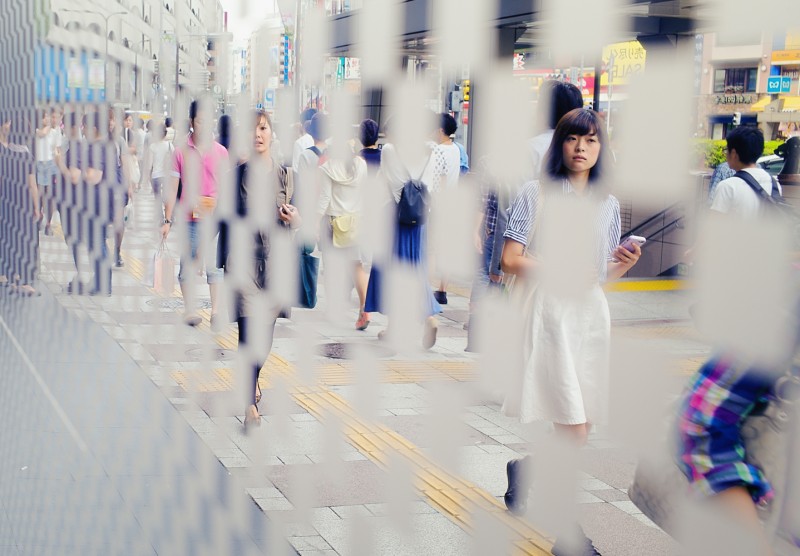
London-based photographer Marie Laigneau is fascinated by the relationship between people and the urban environment. By consciously playing with light and its absence, she creates stories with subtle atmospheres, strong contrasts and powerful dynamics as she captures the fleeting moments of city life.
Street photography is your genre – can you explain why you decided on it?
For me, street photography allows me to tell better stories than I would have imagined myself. I started photography as a hobby a long time ago, principally doing travel photography, and taking captures of everything around me. It was a good way to learn of course, but it soon became very overwhelming. There were so many things that I wanted to capture! When I moved to Chicago however, I started to see stories everywhere, and I realized that I was much more interested in people – and their relationship with the city – than any other subjects or topics. What I really wanted to do was to tell human stories, exploring their hopes and dreams, their fears and disillusions, and how it expresses itself within the city.
Do you need a particular mood to be able to photograph?
My work is very intuitive in nature. Although I know where to shoot and when to shoot to get optimal results, once I am out shooting, I don’t actually think: I just let my intuition guide me. I’d much rather stay open to the unexpected than attempting to shoot with anything specific in mind. I am looking for those special moments when elements in the external world somehow reflect what’s inside me. Therefore, I can never predict what I will see, and what I will shoot. It’s not easy for me to tell you what I have just shot, or why I just took this shot – this realization comes afterwards, when I review and edit my pictures. To me, this level of mindfulness is an important factor of creativity: the ability to embrace possibilities as they come and manifest themselves in the world.
What do you try to convey with your pictures?
More than people themselves, I am interested in what lies at the intersection of people and their city. What I try to portray is the fleeting essence of urban life: this relationship that exists between people and their city, making them look even more human and vulnerable in a way. The city is oftentimes a projection of our own human feelings, our dreams and hopes, and I see the city as an inherent extension of my subjects. In this sense, the city is just as important to me as my human subjects themselves. This is my biggest source of inspiration.
What role does the camera play in street photography?
For me, the camera is a pragmatic tool that you should almost forget in order to focus entirely on the world of possibilities. If it starts to become too complex, too visible, too heavy, then it misses the mark and negatively impacts the experience. I started shooting with a Canon 60D and a zoom lens, and learned street photography this way. One year ago, I decided to change everything – I purchased a Leica M (Typ 240) and a Summicron 35mm f/2 Asph lens, and I never looked back. Working with the Leica M has been something of a revelation to me: the viewfinder never goes dark, the camera never fails me. I have full creative control, and at the same time, I nearly forget that I have a camera. I have chosen a 35mm for my lens, which is quite a versatile format. I can shoot portraits or wide angles just as I like, there’s nearly no distortion at all. It took me a while though, to learn to shoot in manual focus at high aperture. But I like to work within these new constraints, they’ve pushed me further in my photography.
Street photography is your genre – can you explain why you decided on it?
For me, street photography allows me to tell better stories than I would have imagined myself. I started photography as a hobby a long time ago, principally doing travel photography, and taking captures of everything around me. It was a good way to learn of course, but it soon became very overwhelming. There were so many things that I wanted to capture! When I moved to Chicago however, I started to see stories everywhere, and I realized that I was much more interested in people – and their relationship with the city – than any other subjects or topics. What I really wanted to do was to tell human stories, exploring their hopes and dreams, their fears and disillusions, and how it expresses itself within the city.
Do you need a particular mood to be able to photograph?
My work is very intuitive in nature. Although I know where to shoot and when to shoot to get optimal results, once I am out shooting, I don’t actually think: I just let my intuition guide me. I’d much rather stay open to the unexpected than attempting to shoot with anything specific in mind. I am looking for those special moments when elements in the external world somehow reflect what’s inside me. Therefore, I can never predict what I will see, and what I will shoot. It’s not easy for me to tell you what I have just shot, or why I just took this shot – this realization comes afterwards, when I review and edit my pictures. To me, this level of mindfulness is an important factor of creativity: the ability to embrace possibilities as they come and manifest themselves in the world.
What do you try to convey with your pictures?
More than people themselves, I am interested in what lies at the intersection of people and their city. What I try to portray is the fleeting essence of urban life: this relationship that exists between people and their city, making them look even more human and vulnerable in a way. The city is oftentimes a projection of our own human feelings, our dreams and hopes, and I see the city as an inherent extension of my subjects. In this sense, the city is just as important to me as my human subjects themselves. This is my biggest source of inspiration.
What role does the camera play in street photography?
For me, the camera is a pragmatic tool that you should almost forget in order to focus entirely on the world of possibilities. If it starts to become too complex, too visible, too heavy, then it misses the mark and negatively impacts the experience. I started shooting with a Canon 60D and a zoom lens, and learned street photography this way. One year ago, I decided to change everything – I purchased a Leica M (Typ 240) and a Summicron 35mm f/2 Asph lens, and I never looked back. Working with the Leica M has been something of a revelation to me: the viewfinder never goes dark, the camera never fails me. I have full creative control, and at the same time, I nearly forget that I have a camera. I have chosen a 35mm for my lens, which is quite a versatile format. I can shoot portraits or wide angles just as I like, there’s nearly no distortion at all. It took me a while though, to learn to shoot in manual focus at high aperture. But I like to work within these new constraints, they’ve pushed me further in my photography.
ALL IMAGES ON THIS PAGE: © Marie Laigneau


